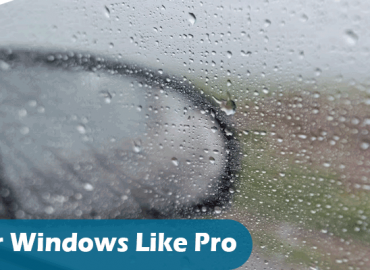It’s no secret that paint protection film (PPF) is one of the best ways to protect your vehicle’s paint from scratches, chips, and other environmental hazards. Many drivers have heard of PPF but don’t know much about it. Unfortunately, there are a lot of misconceptions floating around out there about PPF, and these 5 Common Myths About Paint Protection Film Debunked can make some drivers hesitant to invest in this protective layer for their ride.
In this article, I’m here to debunk the five most common myths about paint protection film and reveal the real truth. By separating myth from fact, I hope to help you make an educated decision about whether or not PPF is right for your car. So if you’ve ever wondered if PPF will change the color of your car, if it affects waxing or maintenance schedules, or anything else related to this vehicle-saving technology, keep on reading.
Paint Protection Film Is Expensive
When it comes to car paint protection film, there’s the myth that it’s expensive. In reality, the cost of the paint protection film is quite affordable and can be a great investment for your vehicle. Especially when you consider all of its benefits.
Paint protection film costs vary based on the size of the area being covered and the specific type of film you choose. Generally speaking, it will cost anywhere from $300-$600 to get your entire vehicle covered in paint protection film. That may seem like a lot at first blush, but consider this. The average repair costs for a single door ding or scratch on a car can easily run up to $800 or more! On top of that, there’s no guarantee that such repairs will look as good as your original paint job. Investing in paint protection film is one way to significantly reduce those repair costs.
PPF Will Damage Your Car’s Paint
If you’re considering installing paint protection film (PPF) to protect your car’s paintwork. One of the biggest concerns may be that it could do more harm than good. After all, if it’s applied incorrectly, or the quality isn’t up to scratch. Then it could leave you with more problems than you had before.
The truth is, however, that when applied correctly by a professional installer, the paint protection film is designed to protect your car rather than damage it. The film itself is made from a combination of urethane and adhesive elements. That sticks to your paint very securely but won’t damage it in any way. In fact, the protective layer provided by PPF can even help keep your car looking brand new for longer.
So if you want to keep your car looking sharp and shiny for years to come without worrying about small scratches and blemishes. Then a good quality paint protection film is worth every penny. Especially considering that regular waxing or polishing can’t match its level of protection.
PPF Turns Yellow Over Time
You might have heard that paint protection film (PPF) turns yellow over time. But don’t worry it’s nothing to worry about! Here’s the truth:
The truth is, PPF may be yellow with age, especially if exposed to prolonged UV light exposure. However, this is completely normal and doesn’t indicate a defect in the product it’s simply part of the natural aging process of the product.
An optically clear sealant protects PPF from UV rays, so it won’t be yellow. This sealant also adds increased gloss and slickness to the PPF’s surface which also helps to repel dirt and stains. It’s a great way to keep your vehicle looking pristine for years to come.
PPF Is Difficult to Apply and Remove
No doubt, a successful application requires quite a bit of skill to get right. That’s why it’s important to get an expert who knows what they’re doing to install it for you. Once applied correctly. Paint protection film can last for years and is usually easy to remove should you decide when you want an updated look.
In fact, PPF material is designed with a special adhesive that enables it to adhere itself firmly to any target object like your vehicle. But still, allow for repositioning if necessary. This can be really handy if you’re installing the film yourself and fail to get it just right on the first attempt.
And when the time comes for removal. The same adhesive helps make this process much simpler than if you didn’t have it installed in the first place. All you need is some heat; either a hair dryer or a heat gun works great. Just add the heat and carefully start peeling off those pesky edges until all the PPF film is off your car!
PPF Only Protects Against Rock Chips
It’s true that the number one job of paint protection film (PPF) is to protect your vehicle’s paint job against chipping caused by road debris. But it’s also great for keeping your car looking shiny and new in general.
When you think about it, PPF is essentially a layer of transparent armor between you and the elements. In addition to protecting your vehicle from rock chips, it also keeps your car looking like new because:
- It has a UV-stabilizer coating which protects against sun damage and fading
- It helps reduce oxidation and other types of deterioration caused by acid rain, salt air, and other corrosive chemicals
- It provides an extra layer between your vehicle’s paint job and dirt, dust, bird droppings, and tree sap. All things that can damage the paint if not removed quickly
It’s also worth mentioning that PPF isn’t just for cars. It can also be applied on boats, trailers, RVs, or even planes. With all this protection in mind, it’s easy to see why PPF has become an increasingly popular choice for people. Who wants to keep their vehicles looking shiny and new?
All PPF Brands and Installers Are the Same
Have you ever heard this statement: “All paint protection film brands and installers are the same”? Believe it or not, this is actually not true.
There is a huge variation in quality between different brands and installers of PPF. A lot of the problems people have with PPF come from lower-quality products and inexperienced installers.
So, how do you pick the best option?
- Do your research. Look into the brand’s reputation—what kind of warranty do they offer, what kind of materials are used?
- Ask for samples. Ask to see samples of the company’s workmanship to make sure you’re getting a high-quality product.
- Read reviews. Seek out customer reviews to get an idea if a certain provider is reputable or not.
- Get recommendations. Ask around, such as your friends or family who have used PPF on their vehicles, to hear what they have to say about it.
By taking these steps. You can be sure that you’re getting paint protection film from reliable sources with experience in the installation and quality control that will ensure a great job every time.
Conclusion
So, the truth is out paint protection films are a convenient, cost-effective, and reliable way of protecting your car paint from hazards like abrasion, scratch, and UV rays. Yes, it may require a bit of investment and maintenance, but that’s always worth the long-term durability and protection it provides.
Paint protection films come in a variety of sizes, materials, and types to suit your needs, and to give you the most out of your car’s esthetics and longevity. All in all, it’s a great investment for your car, so make sure to do your research and find the right product for your car.




